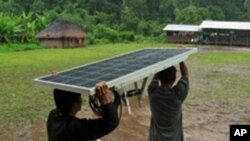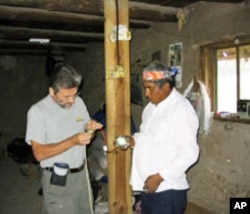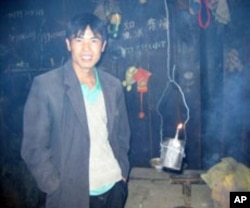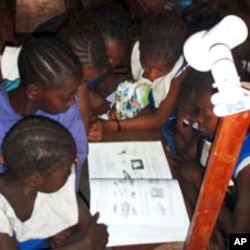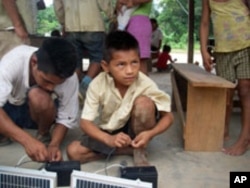What do traffic lights, remote control devices and cell phone displays have in common? The answer is light emitting diodes or LEDs. LEDs produce as much light as incandescent light bulbs but consume only 10 percent of the electricity and last many times longer. This is the story of how one man combined LEDs with solar energy technology to bring high-quality, low-cost electric light to poor people around the world.
Some 1.6 billion people lack access to electricity
In 1996 Canadian professor David Irvine-Halliday was on a work trip in Nepal when his return flight was canceled. It would be weeks before he could catch another flight home, but the delay gave him time to hike the Annapurna Circuit, a 14-day trek through the Himalayas. One day, wandering past a school he heard children singing. He looked in the window and wondered how, without light, the kids could study. Sadly, he realized, these conditions are common in poor countries. Some 1.6 billion people in the world have no access to electricity.
People who aren't connected to the electric grid often get their light from kerosene, candles or burning wood. But, the products are expensive, produce only dim light and generate polluting fumes that cause health and environmental problems. Responding to the need for safe, clean and affordable lighting, Irvine-Halliday set to work on a solution.
LEDs turn out to be a bright idea
Back in his laboratory at the University of Calgary, Alberta, he experimented with light emitting diodes, technology he was familiar with as a professor of renewable energy. "I knew that they were virtually indestructible. They lasted for decades because they were putting them under the Pacific and Atlantic Oceans, and they were going to be there for years and years and years working for 24 hours a day," he says.
Irvine-Halliday settled on a one watt bright white light, a Japanese product he discovered on the Internet. Startled by the intense beam he generated when he rigged the diode to his bike generator, he recalls saying to his partner, "Good God, a child could read by the light of a single diode."
In 2000, Irvine-Halliday returned to Nepal to put the system in homes. He first used pedal power, then turned to hydro and finally turned to solar power generation. The single watt solar LED package works, Irvine-Halliday told Capitol Hill staffers at a recent meeting in Washington, because it is affordable, clean and easy to set up and maintain. "The one-time cost of our system - which consists of a small solar panel, a little motorcycle-sized battery and a couple of LED lamps, is less than one hundred dollars," he says. He adds that's about the same as the cost of kerosene for a year.
Villagers get micro-loans to buy lighting systems
What started as a family project has emerged as the Light Up the World Foundation, which has reached 25,000 people in 51 countries. Initially systems were given away. Today, growing numbers of villagers are purchasing and maintaining the equipment. "Our short term goal for the next couple of years is that 80 percent of all the systems that Light up the World is involved [with] will be via micro-credit," Irvine-Halliday says, "where the villager borrows from local micro-credit organizations and pays them back."
The organization has made a difference in people's lives beyond Irvine-Halliday's expectations.
Acquiring this simple and non-polluting form of electric light, he points out, promotes education, public health, economic security and a cleaner environment. In January, he will retire from his day job at the University of Calgary. He's also decided to give up leadership in Light up the World Foundation to start a company in India that will develop a more energy-efficient and cheaper lighting system that he hopes will bring even more light to the world's poor.




